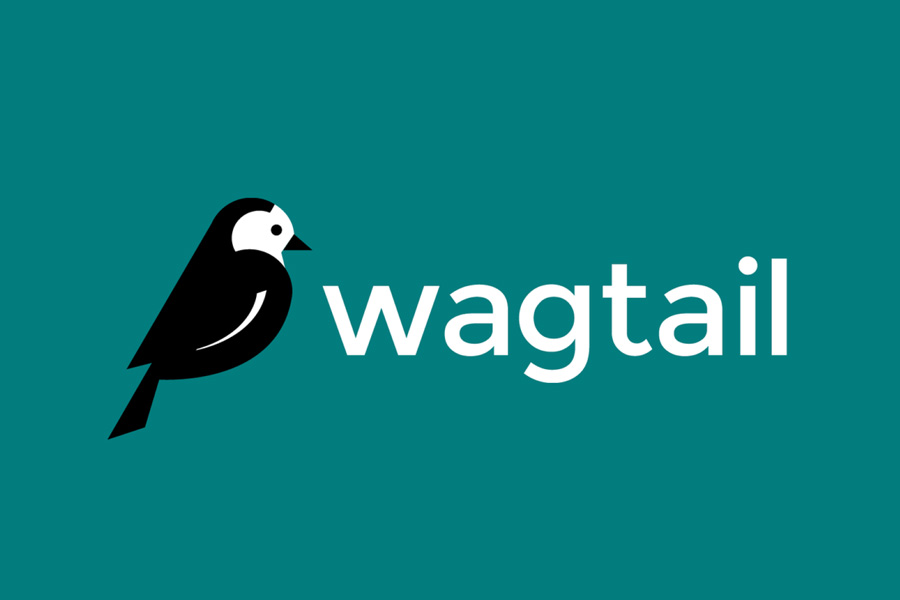Wagtail developers offer a modular architecture, allowing you to customize your website to meet specific needs. Key features of Wagtail include:
- Streamfield: A flexible content editor that allows you to create custom page layouts and content structures.
- Wagtail Admin: A user-friendly interface for managing content, users, and site settings.
- Django Integration: Leverages the power of Django for robust web development.
- Extensibility: Easily extend Wagtail’s functionality with custom apps and modules.
- Community: Benefit from a large and active community of developers and users.
Getting Started with Wagtail
- Installation: Install Wagtail using pip or your preferred package manager.
- Create a Project: Create a new Django project and add Wagtail as an app.
- Set Up Admin: Configure the Wagtail admin interface and create user accounts.
- Create Content: Start creating content using the Streamfield editor and other Wagtail features.
Key Features and Benefits of Wagtail
- Flexibility: Wagtail’s Streamfield editor allows you to create custom page layouts and content structures.
- Scalability: Wagtail can handle websites of any size, from small personal blogs to large enterprise applications.
- Performance: Wagtail is optimized for performance, ensuring fast load times and a great user experience.
- Extensibility: Easily extend Wagtail’s functionality with custom apps and modules.
- Community Support: Benefit from a large and active community of developers and users who can provide assistance and support.
Building Powerful Websites with Wagtail
- Planning Your Website: Define your website’s goals, target audience, and key features.
- Creating Content Models: Define the structure of your content using Wagtail’s content models.
- Designing Your Website: Create custom templates using Wagtail’s templating system.
- Building Custom Apps: Develop custom apps to extend Wagtail’s functionality.
- Testing and Optimization: Test your website thoroughly and optimize it for performance and SEO.
Advanced Wagtail Development Techniques
- Wagtail Snippets: Create reusable snippets of content for use across your website.
- Wagtail Images: Manage and optimize images within Wagtail.
- Wagtail Forms: Create custom forms using Wagtail’s form API.
- Wagtail API: Expose your Wagtail content as an API for integration with other applications.
- Wagtail Integrations: Integrate Wagtail with other tools and services.
Advanced Wagtail Development: A Deep Dive into Streamfield
Streamfield is one of the core features of Wagtail that enables you to create highly flexible and customizable page layouts. By understanding the advanced capabilities of Streamfield, you can build more dynamic and engaging websites.
Advanced Streamfield Usage
- Custom Streamfield Blocks: Create your own custom Streamfield blocks to meet specific requirements.
- Streamfield Block Inheritance: Inherit from existing Streamfield blocks to create variations or extensions.
- Streamfield Block Groups: Group Streamfield blocks together for easier management and reuse.
- Streamfield Block Validation: Validate user input within Streamfield blocks to ensure data integrity.
- Streamfield Block JavaScript: Add custom JavaScript functionality to Streamfield blocks for interactive elements.
Streamfield and Wagtail API
- Streamfield Serialization: Serialize Streamfield content for use in APIs or data exports.
- Streamfield Deserialization: Deserialize Streamfield content from APIs or data imports.
- Streamfield API Endpoints: Create custom API endpoints to manage Streamfield content.
Streamfield and Performance
- Streamfield Optimization: Optimize Streamfield usage for performance, especially when dealing with large amounts of content.
- Streamfield Caching: Implement caching strategies to improve Streamfield performance.
- Streamfield Indexing: Create indexes for Streamfield fields to improve search performance.
Streamfield and Third-Party Integrations
- Streamfield Integrations: Integrate Streamfield with third-party services, such as content management systems or e-commerce platforms.
- Streamfield Customizations: Customize Streamfield behavior to fit your specific use cases.
By mastering advanced Streamfield techniques, you can create highly customized and dynamic page layouts that enhance the user experience and functionality of your Wagtail website.
Advanced Streamfield Techniques: A Deep Dive
Building upon the previous exploration of advanced Streamfield techniques, let’s delve deeper into specific areas:
Streamfield and Custom Fields
- Custom Fields: Create custom fields within Streamfield blocks to store additional data.
- Field Validation: Validate custom field input to ensure data integrity.
- Field Relationships: Create relationships between Streamfield blocks and other models.
Streamfield and Wagtail Admin
- Streamfield Admin Customization: Customize the appearance and behavior of Streamfield blocks within the Wagtail admin.
- Streamfield Admin Permissions: Control access to Streamfield blocks for different user roles.
- Streamfield Admin Integrations: Integrate Streamfield with other Wagtail admin features, such as search and filtering.
Streamfield and Wagtail CMS Features
- Streamfield and Wagtail Pages: Use Streamfield to create custom page layouts and templates.
- Streamfield and Wagtail Snippets: Integrate Streamfield with Wagtail Snippets for reusable content blocks.
- Streamfield and Wagtail Forms: Use Streamfield to create custom form layouts.
Streamfield and Performance Optimization
- Streamfield Performance Profiling: Use profiling tools to identify performance bottlenecks within Streamfield.
- Streamfield Indexing: Create indexes for Streamfield fields to improve search performance.
- Streamfield Caching: Implement caching strategies to reduce database queries and improve performance.
Streamfield and Third-Party Integrations
- Streamfield and CMS Integrations: Integrate Streamfield with other content management systems.
- Streamfield and E-commerce Integrations: Integrate Streamfield with e-commerce platforms.
- Streamfield and Marketing Automation: Integrate Streamfield with marketing automation tools.
By delving deeper into these advanced Streamfield techniques, you can create even more sophisticated and powerful page layouts that enhance the user experience and functionality of your Wagtail website.
Wagtail Security: Protecting Your Website
Wagtail is a powerful content management system (CMS) that offers robust security features. However, like any web application, it’s essential to take proactive measures to protect your Wagtail website from vulnerabilities.
Fundamental Security Practices
- Keep Wagtail and Packages Updated: Regularly update Wagtail and its dependencies to address security vulnerabilities.
- Strong Passwords: Use strong, unique passwords for all user accounts, including the admin account.
- Limit User Permissions: Assign appropriate permissions to users based on their roles and responsibilities.
- Two-Factor Authentication (2FA): Enable 2FA for additional security.
- Regular Backups: Create regular backups of your Wagtail site to protect against data loss.
Advanced Security Measures
- Security Audits: Conduct regular security audits to identify potential vulnerabilities and address them promptly.
- Web Application Firewall (WAF): Implement a WAF to protect your Wagtail website from common web attacks.
- Input Validation: Validate user input to prevent injection attacks and other vulnerabilities.
- Output Encoding: Properly encode output to prevent cross-site scripting (XSS) attacks.
- Session Management: Implement secure session management practices to prevent session hijacking.
- Security Headers: Use security headers like HTTP Strict Transport Security (HSTS) and Content Security Policy (CSP) to enhance security.
Wagtail-Specific Security Considerations
- Wagtail Admin Security: Protect the Wagtail admin interface by restricting access and using strong authentication.
- Custom App Security: Review the security implications of custom apps and modules you install.
- Wagtail API Security: Secure your Wagtail API using authentication and authorization mechanisms.
- Wagtail Templates: Be cautious of security vulnerabilities in custom templates.
Additional Tips
- Security Training: Educate your team members about security best practices.
- Monitor Security Logs: Regularly review security logs to identify any suspicious activity.
- Stay Informed: Stay updated on the latest security threats and best practices.
By following these security practices, you can significantly reduce the risk of security breaches and protect your Wagtail website. Remember, security is an ongoing process that requires constant attention and vigilance.
Advanced Wagtail Security: A Deep Dive
Building upon the previous exploration of Wagtail security, let’s delve deeper into specific areas:
Web Application Firewall (WAF)
- WAF Configuration: Configure your WAF to protect against common web attacks like SQL injection, cross-site scripting (XSS), and cross-site request forgery (CSRF).
- WAF Rule Sets: Use pre-defined rule sets or create custom rules to tailor your WAF protection.
- WAF Integration: Integrate your WAF with your Wagtail application for seamless protection.
Input Validation and Output Encoding
- Input Validation: Validate user input to prevent malicious data from being injected into your application.
- Output Encoding: Properly encode output to prevent XSS attacks and other vulnerabilities.
- Sanitization Libraries: Use libraries like Django’s built-in sanitization functions or third-party libraries for effective input validation and output encoding.
Session Management
- Session Fixation Prevention: Implement measures to prevent session fixation attacks, where attackers hijack user sessions.
- Session Timeout: Set appropriate session timeout values to limit the duration of active sessions.
- Secure Cookie Handling: Use secure HTTP cookies and set appropriate attributes to protect against session hijacking.
Security Headers
- HTTP Strict Transport Security (HSTS): Force browsers to use HTTPS for all connections to your website.
- Content Security Policy (CSP): Restrict the resources that your website can load to prevent content injection attacks.
- X-Frame-Options: Prevent your website from being embedded in an iframe to protect against clickjacking attacks.
Advanced Security Techniques
- Security Headers: Use additional security headers like X-XSS-Protection, X-Content-Type-Options, and Referrer-Policy to enhance security.
- Security Testing: Conduct regular security testing, including vulnerability scanning and penetration testing.
- Security Monitoring: Monitor security logs and alerts for any suspicious activity.
- Security Training: Educate your team members about security best practices and the latest threats.
By delving deeper into these advanced security techniques, you can significantly enhance the protection of your Wagtail website and mitigate the risk of security breaches.
Advanced Wagtail Security: A Deep Dive
Building upon the previous exploration of advanced Wagtail security techniques, let’s delve deeper into specific areas:
Web Application Firewall (WAF)
- WAF Rule Sets: Customize WAF rule sets to match your specific security requirements.
- WAF False Positives: Address false positives that may occur due to WAF rules.
- WAF Performance: Monitor WAF performance and optimize it to avoid impacting website performance.
Input Validation and Output Encoding
- Custom Input Validation: Create custom input validation rules to validate specific data types or patterns.
- Regular Expressions: Use regular expressions for more complex input validation.
- Output Encoding Libraries: Explore third-party libraries for efficient output encoding.
Session Management
- Session Fixation Prevention: Use techniques like session regeneration to prevent session fixation attacks.
- Session Timeouts: Set appropriate session timeouts based on your application’s requirements.
- Session Storage: Consider using secure session storage mechanisms like database storage or memcached.
Security Headers
- HSTS Preload List: Submit your website to the HSTS Preload List to enforce HSTS for all visitors.
- CSP Policies: Create granular CSP policies to control the resources your website can load.
- X-Frame-Options: Configure X-Frame-Options to prevent your website from being embedded in an iframe.
Advanced Security Techniques
- Security Testing Automation: Automate security testing using tools like OWASP ZAP or Burp Suite.
- Security Incident Response Plan: Develop a plan to respond to security incidents effectively.
- Security Awareness Training: Provide regular security awareness training to your team members.
Wagtail-Specific Security Considerations
- Wagtail Admin Security: Implement additional security measures for the Wagtail admin interface, such as IP address restrictions or two-factor authentication.
- Wagtail API Security: Use API keys or OAuth to protect your Wagtail API.
- Wagtail Themes: Review the security implications of custom themes and ensure they adhere to best practices.
By delving deeper into these advanced security techniques, you can significantly enhance the protection of your Wagtail website and mitigate the risk of security breaches.





